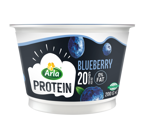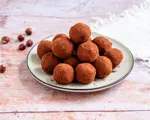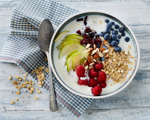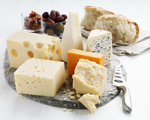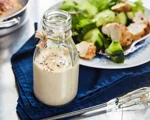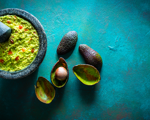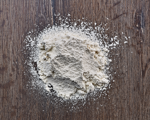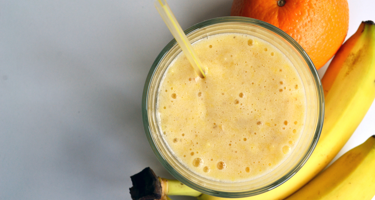
Proteins contribute to maintaining normal bones and muscle mass. They also contribute to growth in muscle mass. In general, we distinguish between animal-based protein and plant-based protein.
Fruits are part of the plant-based category and although fruits in general are not high in protein, this article provides an overview of a broad range of fruits to give you an idea of the protein content.
We present a wide selection, including pomes, stone fruits, and berries as well as fresh and dried fruits. In the table below, we indicate the protein content per 100 grams as well as the percentage that protein constitutes of the total energy value.

Protein in fruit - Comparison chart
As shown in the table below, fresh fruit often has a lower protein content than dried fruit, if we look at the protein content in grams per 100 grams. At the top of our list are dried apricots and dried figs with 3.5 and 3.3 grams of protein per 100 grams, respectively. Their fresh counterparts both contain 0.8 grams of protein per 100 grams. If we compare the percentage of the total energy value, raw apricot contains 10.7 % of protein, while dried apricot contains 5.7 %.
| Fruit | Protein content (per 100 grams) | Percentage of the total energy value |
|---|---|---|
| Apricot, dried | 3.5 grams | 5.7 % |
| Figs, dried | 3.3 grams | 4.5 % |
| Raisins | 3.2 grams | 3.9 % |
| Passionfruit | 2.8 grams | 10.9 % |
| Prunes | 2.7 grams | 4.7 % |
| Dates, dried | 2 grams | 2.6 % |
| Avocado | 1.6 grams | 4.2 % |
| Blackberries | 1.3 grams | 20.1 % |
| Red currant | 1.3 grams | 8.3 % |
| Banana | 1.1 grams | 4.7 % |
| Raspberries | 1 gram | 12.1 % |
| Rhubarb | 0.9 grams | 14.2 % |
| Apricot, raw | 0.8 grams | 10.7 % |
| Kiwi | 0.9 grams | 9.7 % |
| Watermelon | 0.8 grams | 9.7 % |
Protein in fresh fruit
You might have heard talk about bananas and avocados when people speak about protein in fruits, but as you can see, there are other options with higher protein content, although both are among the fruits with the most protein. Read more about protein in banana and protein in avocado.
Among the fresh fruits in our list, passion fruit has the highest protein content of 2.8 grams per 100 grams, equalling 10.9 % of the total energy value. Blackberries are lower with 1.3 grams of protein per 100 grams but higher with 20.1 % of the total energy value – due to a difference in the other components of the two fruit types.
At the bottom of the top 15 list are watermelon and kiwi with a protein content of 9.7 % of the total energy value and less than 1 gram of protein per 100 grams.
Protein in dry fruit
Drying fruits does not change the natural protein content. However, because the water content is reduced, leading to a decrease in overall weight, the protein content in dried fruit is more concentrated. In other words, while the overall weight of the fruit decreases, the protein content remains relatively constant, leading to a higher protein content per 100 grams.
Note that the percentage protein constitutes of the total energy value decreases in the dried fruits compared to the fresh ones.
Is fruit high in protein?
While fruits do contain proteins, the levels are relatively low, and most of them cannot be classified as high-protein fruits. To get the high-protein label, at least 20 % of the total energy value in the fruit must come from protein, and, as you can see in the table above, this is not the case for any of the fruits on the list except blackberries (20.1 %).
However, the percentage in itself is not always enough, as the additional components of the fruit need to be taken into account as well. Fruits generally contain a respectable amount of water, resulting in a relatively high energy percentage as there are few other components contributing to the total energy value.
Therefore, you might see a (relatively) high percentage of protein, but keep in mind that it might not be completely accurate although the number is not factually wrong. Remember that, although they do not classify as high-protein foods, fresh and dried fruits can still be part of a balanced diet.
Related Articles
Looking to learn about protein content in different foods? Explore our comprehensive guides:


